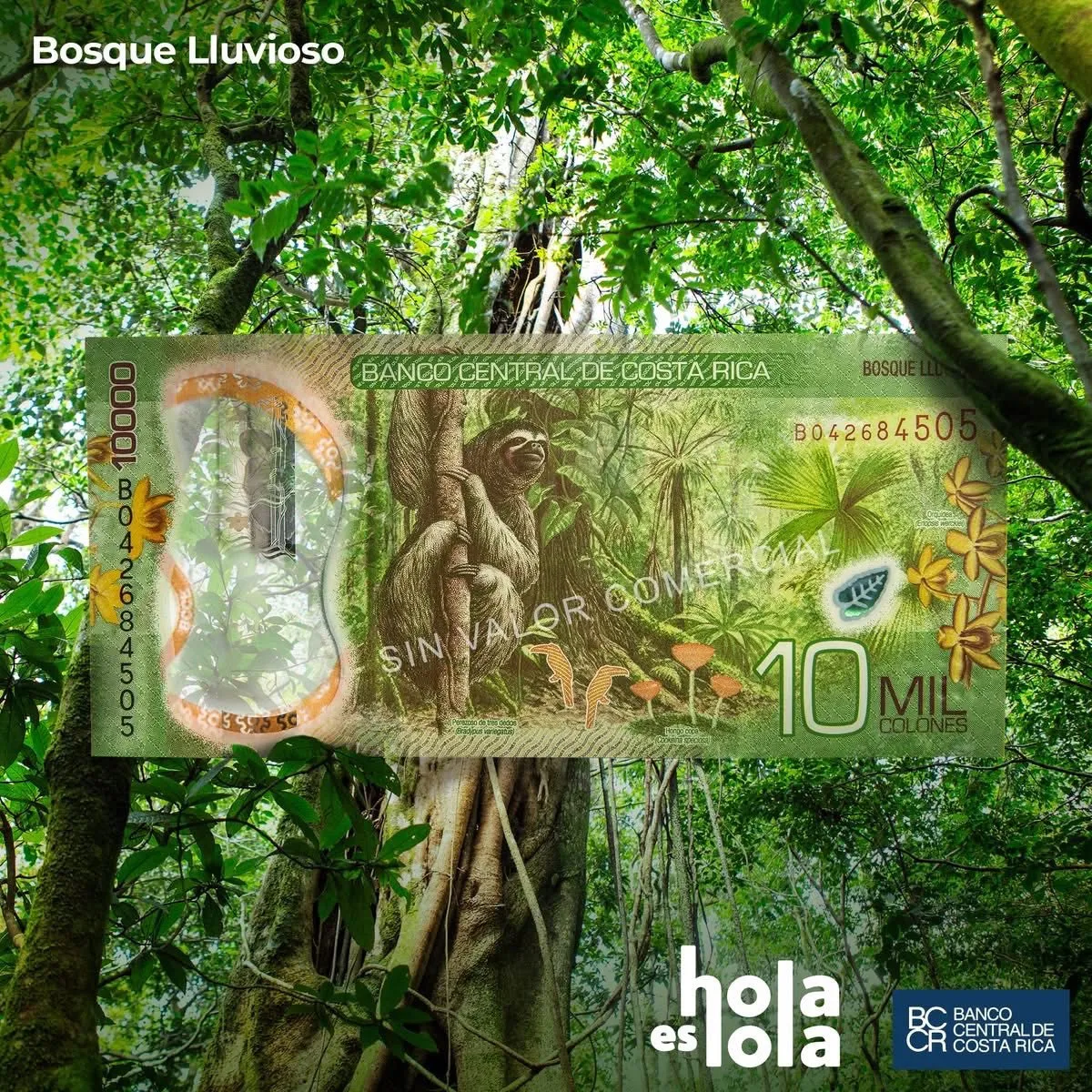By Rico
Copyright qcostarica

Q COSTARICA — Such a beautiful country had to have banknotes that represent it.
The ₡1000 bill features the Tropical Dry Forest
In Costa Rica, the tropical dry forest covers the lowlands, 0–700 meters above sea level (masl), of the province of Guanacaste and the northern part of Puntarenas. To the south, around the Tárcoles River, it gradually changes as climatic conditions favor the establishment of the tropical rainforest.
The fauna of this forest is as rich as its flora. It is home to howler monkeys, spider monkeys, and white-faced monkeys, deer, coatis, peccaries, raccoons, semi-spiny mice, agoutis, pumas, armadillos, magpies, trogons, parrots, parakeets, and a wide variety of insects and spiders, among other groups.
The ₡2000 bill depicts the coral reef
Costa Rica has living and fossil coral reefs of varying ages in various locations throughout its territory. In the Caribbean, they are found in Moín, Limón, Uvita Island, Cahuita, Puerto Viejo, Manzanillo, and Punta Mona. In the Pacific, they are found mainly in Culebra Bay, the Pelonas Islands, Sámara, Dominical, Punta Mala, Golfo Dulce, Caño Island, Marino Ballena National Park—the first marine park created in Costa Rica and Central America—and Cocos Island.
These ecosystems are found in coastal areas, with clear waters that allow light to pass through, warm (23-28°C), and shallow waters (less than 45 meters below sea level). They also require a stable surface, such as rocks, to adhere to. They can be found from near the beach to 2 or 3 kilometers offshore. Coral reefs are one of the most diverse, productive, and beautiful ecosystems in the world.
The ₡5,000 bill depicts the Mangrove
In the Costa Rican Pacific, mangroves are found mainly at the mouths of the Tempisque, Bebedero, Tárcoles, Parrita, Térraba, and Sierpe rivers, in the Gulfs of Papagayo, Nicoya, and Dulce, and in the bays of Santa Elena, Salinas, Tamarindo, and Herradura. On the Caribbean coast, they are located in Moín and the Gandoca Lagoon.
Mangroves occupy approximately 1% of the national territory. During high tide, these forests are flooded by saltwater; in the mangroves at river mouths, salinity decreases as it mixes with freshwater.
In Costa Rica, there are several species of mangrove, with common names such as red mangrove, pineapple mangrove, black mangrove, white mangrove, and buttonwood mangrove. Shells, crabs, snails, and shrimp and fish larvae live among their roots, forming a very complex community. The canopy of these forests is home to countless birds, including herons, kingfishers, and mangrove hummingbirds. Iguanas, snakes, white-faced monkeys, raccoons, lizards, and bats can be found in their branches.
The ₡10,000 banknote shows the Tropical Rainforest
The tropical rainforest is one of the most diverse and exuberant ecosystems in the world. In Costa Rica, it used to be the largest, found in the lowlands, up to 700 meters above sea level, and in very rainy areas such as the Central and South Pacific, the Northern Zone, and the Caribbean. Due to severe deforestation at the end of the last century, this forest is now highly fragmented, and its largest remnants are protected as national parks or biological reserves.
This ecosystem is a complex and dense forest, where trees reach heights of 40-55 meters. The trees are generally umbrella-shaped, with broad canopies and long trunks, often with tall, smooth, and slender branches.
This forest has a greater diversity of plants and animals per unit area than any other type of forest. More animal species can be found in a single tree in a tropical rainforest than in an entire forest at higher latitudes. The diverse forms of animal and plant life occupy a wide variety of specialized environments in the different forest strata.
The ₡20,000 banknote depicts the Páramo
The páramo is an ecosystem with varied mountain herbaceous vegetation, generally treeless—and if there are any, they are small, dense, and isolated—in cold, inhospitable, and humid environments.
The páramo is found mainly on the country’s highest peaks, above 2,800 meters above sea level, in the Cerro de la Muerte (Buenavista and Vueltas), Chirripó, and Kámuk mountains of the Talamanca Mountain Range. It is also found on the summits of the Irazú and Turrialba volcanoes in the Central Volcanic Range.
Páramo vegetation consists primarily of low-growing, small-leaved herbs and shrubs. Dwarf bamboos, such as chusquea, are abundant, as are grasses and ferns. In areas with poor drainage, small swamps called peat bogs form, made up of partially decomposed plant matter.
The páramos are home to various species of insects and spiders, some mammals such as rabbits and coyotes, two species of lizards, a salamander, and very common birds such as the volcano vulture, the junco, the scoter, the blackbird, and the corn eater. There are no fish, despite the abundance of lakes and streams.
Some animals reduce their metabolism to the point of not moving unless the sun is shining. At night, mammals from the nearby forests, such as mountain goats, pumas, and manigordos, frequently visit.



